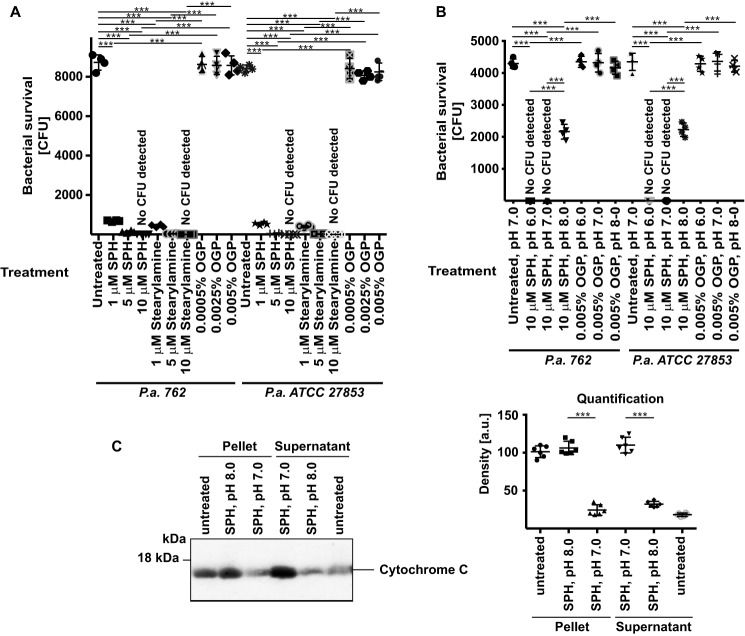Figure 4.
NH2 group and protonation of this group are required for the bactericidal effects of sphingosine on P. aeruginosa. A, each of the 10,000 cfu of P. aeruginosa (P.a.) strains 762 and ATCC 27853 was incubated with 1, 5, or 10 μm stearylamine or SPH or 0.0005, 0.0025, or 0.005% of the solvent OGP in PBS adjusted to pH 7.0. After 60 min, the bacteria were washed; aliquots were plated on trypticase soy broth plates, and cfu were counted after growth overnight. Shown are the means ± S.D. of four independent experiments each. ***, p < 0.001, ANOVA. B, each of the 10,000 cfu of P. aeruginosa (P.a.) strains 762 and ATCC 27853 was incubated with 10 μm SPH in PBS adjusted to a pH of 6.0, 7.0, or 8.0 for 60 min and then washed. Controls were incubated with the corresponding concentrations of the solvent OGP. Aliquots were then plated on trypticase soy broth plates, and cfu were counted after growth overnight. Shown are the means ± S.D. of four independent experiments each. ***, p < 0.001, ANOVA. C, isolated mitochondria were incubated with 0.5 μm sphingosine at pH 7.0 or 8.0 for 30 min on ice or left untreated. The results indicate a release of cytochrome c from isolated mitochondria at pH 7.0, whereas sphingosine is inactive at pH 8.0. Shown is a representative Western blotting demonstrating the release of cytochrome c into the supernatant and the amount of cytochrome c in the corresponding mitochondrial pellets from four independent experiments and the quantitative analysis using Photoshop® for measuring the density of the Western blotting signals. Given are the means ± S.D., n = 4; ***, p < 0.001; t test.

